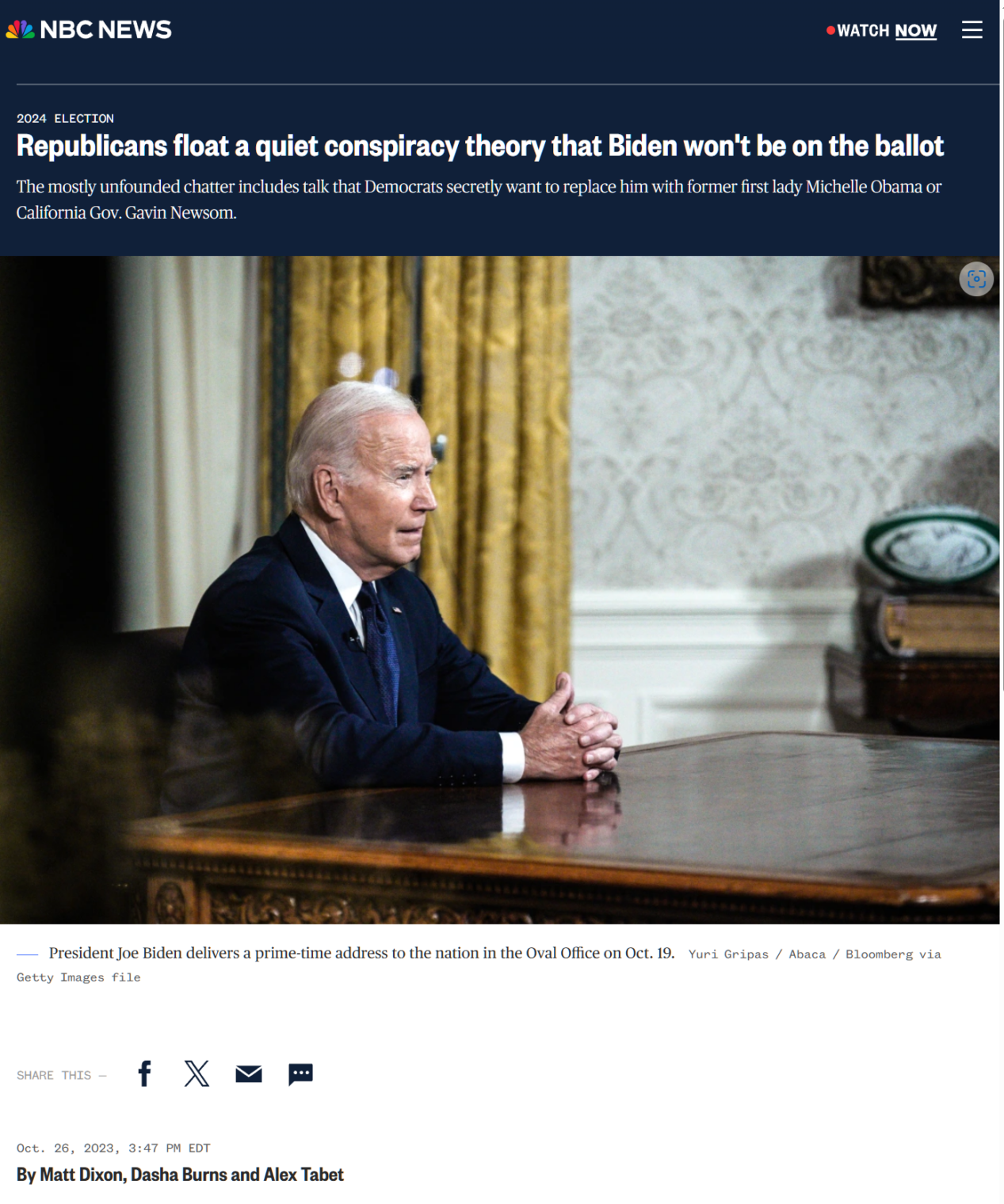One-year anniversary of a Republican conspiracy theory
One year ago today… “Republicans float a quiet conspiracy theory that Biden won’t be on the ballot” (NBC):
Though no incumbent president has declined to seek a second term since Lyndon Johnson in 1969, there is an unfounded conversation among a faction on the political right that goes something like this: Democratic power brokers will intervene at the last minute to replace a weakened 80-year-old Biden with someone else as the party’s nominee.
Let’s go back four years to see what I was writing here….
- Who is the Big Money candidate this year? (Biden got more money and it came from the richest Americans who, of course, became vastly wealthier during the Biden-Harris administration)
- The CDC and our state public health department tell us how to trick or treat
- Do lobbyists support Biden-Harris or Trump-Pence? (photos of the sign forests that people in Bethesda, Maryland and Lincoln, Maskachusetts put up before the election)
- The six-car Donald Trump Express HO-scale train (still available today, now with a 2024 box car!)
- Why can’t people who’ve previously been infected with COVID-19 clean car interiors? (part of the Maskachusetts system for preventing COVID-19 spread in which schools were closed and marijuana stores were open; note that the state ended up with a higher age-adjusted COVID-19 death rate than Florida’s)
- Faith in the Church of Shutdown not shaken by weight gain (“A Boston friend who is about 60 years old recently shared that the 50+ shutdown orders from the Maskachusetts governor had resulted in the loss of her fitness habits, a cessation in her gym visits, a substantial weight gain, and a general feeling of poor health. The shutdown that protected her from Covid-19, in other words, has rendered her far more vulnerable to Covid-19 than she ever was previously…)
- Who has watched Hamilton more than once on Disney+? (same question today! Now that peasants have access to Hamilton are the elites still bragging about having scored $1000/seat tickets? In Denver recently nobody was rushing to buy tickets at $50-250.)
- COVID-19 in the school that shut down to avoid COVID-19 (the teachers can’t go back to work because the students exercised what had previously been considered their First Amendment right to assemble)
- Why can’t Michael Bloomberg run a fleet of abortion buses? (the question is even more relevant today; why aren’t there abortion care buses for pregnant people who live in states that don’t allow abortion care at all stages of a pregnant person’s pregnancy?)














